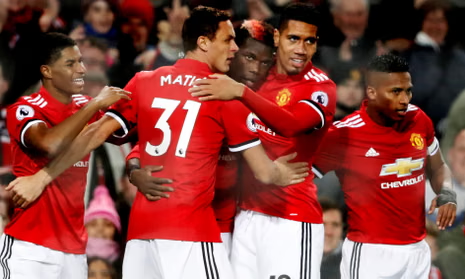
Recent Encounters Showcase Contrasting Fortunes
Manchester United and West Ham United have developed a compelling rivalry that reflects the evolving dynamics of modern Premier League football. Their recent encounters paint a fascinating picture of two clubs experiencing contrasting trajectories, with their latest meeting in July 2025 providing fresh insights into both teams’ tactical evolution.
The most recent clash between these sides occurred during Manchester United’s preseason tour in the United States, where Bruno Fernandes emerged as the hero in a thrilling 2–1 victory at MetLife Stadium. This result marked a significant moment for Ruben Amorim’s Manchester United, as it represented their first win of the 2025 Summer Series and showcased the Portuguese manager’s tactical refinements.
Head-to-Head Record Favors Manchester United

Historically, Manchester United holds a commanding advantage in this fixture. Across 63 competitive meetings since 1995, the Red Devils have secured 37 victories compared to West Ham’s 13 wins, with 13 matches ending in draws. In their most recent Premier League encounters, the pattern has been less predictable, with West Ham achieving notable victories at Old Trafford, including a memorable 2–0 triumph in May 2025 that saw Tomas Soucek and Jarrod Bowen find the net.
The United’s historical dominance, with 73 wins against West Ham’s 47 defeats and 32 draws across 152 competitive meetings dating back to 1911. However, recent form suggests a more competitive dynamic, with West Ham having won back-to-back Premier League games against Manchester United for the first time since December 2007.
Tactical Evolution Under New Management
Ruben Amorim’s Manchester United Revolution
Ruben Amorim’s tactical philosophy has brought a fresh dimension to Manchester United’s playing style. The Portuguese manager favors a 3–4‑3 formation that transforms into various shapes depending on the phase of play. His system emphasizes defensive solidity through a compact back three while creating attacking overloads through dynamic wing-backs and inverted wingers.
Recent tactical analysis of United’s preseason victory revealed Amorim’s focus on speed of transition and aggressive pressing. The manager has implemented a suffocating pressing strategy that forces opponents into errors, while his buildup play involves intricate positional rotations that create multiple passing avenues. Key to his system is the role of a central midfielder dropping into the defensive line during buildup, providing numerical superiority against pressing teams.
Graham Potter’s West Ham Transformation
Graham Potter’s appointment at West Ham has introduced a contrasting tactical approach focused on possession-based football and positional flexibility. Potter’s West Ham typically employs a 3–4‑2–1 formation that can morph into a 4–2‑3–1 depending on the situation. His tactical philosophy emphasizes creating overloads through positional rotations and using tactically gifted players to manipulate opposition shapes.
Potter’s system encourages adventure, with defensive players frequently joining attacks to create numerical advantages. This approach was evident in their recent performances, where wing-backs like Aaron Wan-Bissaka have played crucial roles in both defensive stability and attacking contribution.
Key Player Performances and Statistics
Bruno Fernandes: The Talisman
Bruno Fernandes continues to be Manchester United’s creative heartbeat, having scored both goals in their recent 2–1 victory over West Ham. His performance statistics against the Hammers are impressive, with the Portuguese midfielder having registered 2 assists in 11 appearances against West Ham in the Premier League.
In the 2024/25 season, Fernandes scored 8 goals in 36 Premier League matches, maintaining his status as United’s second-highest scorer. His versatility and tactical intelligence make him perfectly suited to Amorim’s system, where he can drift into pockets between the lines to create overloads.
West Ham’s Attacking Threats

Jarrod Bowen has emerged as West Ham’s primary goal threat, having equaled Mohamed Salah’s tally of 11 Premier League goals in a previous season. His ability to cut inside from the right flank onto his stronger left foot provides a consistent attacking outlet. Meanwhile, Mohammed Kudus offers pace and direct running that can exploit spaces behind opposition defenses.
Tactical Battlegrounds and Key Areas
Set Piece Dynamics
Set pieces represent a crucial battleground in this fixture. West Ham’s proficiency from dead ball situations, particularly with James Ward-Prowse’s delivery expertise, contrasts with Manchester United’s aerial dominance. United’s success rate of 51% in aerial duels and their ability to win 245 aerial battles creates an interesting dynamic against West Ham’s league-leading clearance statistics of 620.
Wing-Back Battles
The tactical battle between wing-backs will likely determine the match’s outcome. Amorim’s system relies heavily on wing-backs like Patrick Dorgu providing width and attacking thrust, while Potter’s approach sees players like Aaron Wan-Bissaka contributing significantly in both phases. The duel between attacking wing-backs and defensive compactness will be fascinating to observe.
Central Midfield Control
Manchester United’s midfield pairing of Manuel Ugarte and Kobbie Mainoo offers a perfect balance of defensive solidity and progressive passing. Ugarte’s ball-winning capabilities complement Mainoo’s press resistance and ball-carrying skills, creating a foundation for Amorim’s attacking transitions. West Ham’s central midfield, featuring Lucas Paqueta drifting between the lines, provides creativity but potentially leaves defensive gaps in transition.
Strategic Predictions and Outlook
The tactical chess match between Amorim and Potter promises to deliver compelling football. Manchester United’s emphasis on high pressing and rapid transitions could exploit West Ham’s occasional vulnerability in defensive phases, particularly when their aggressive buildup leaves gaps behind the fullbacks.
However, West Ham’s ability to create overloads through positional rotations and their improved defensive organization under Potter suggests they possess the tools to frustrate United’s attacking patterns. The key battle will likely occur in the wide areas, where both teams look to create attacking overloads while maintaining defensive stability.

Given Manchester United’s superior individual quality and home advantage, combined with their recent tactical improvements under Amorim, they appear better positioned to secure victory. However, West Ham’s resilience and Potter’s tactical acumen ensure this fixture will remain competitive throughout.
The encounter between these tactically evolving sides represents more than just three points – it’s a showcase of modern football’s tactical complexity and the ongoing development of two ambitious clubs seeking to establish their identity in the Premier League landscape.

Leave a Reply